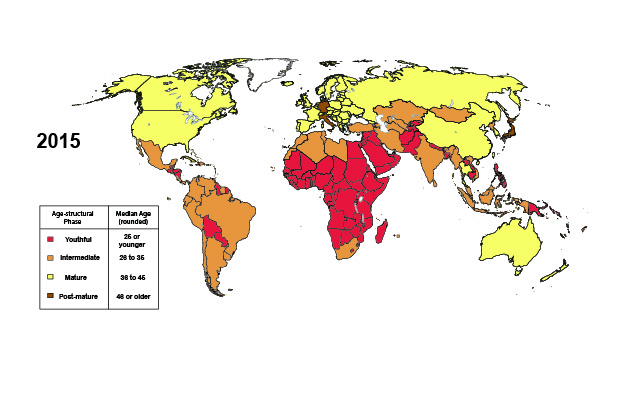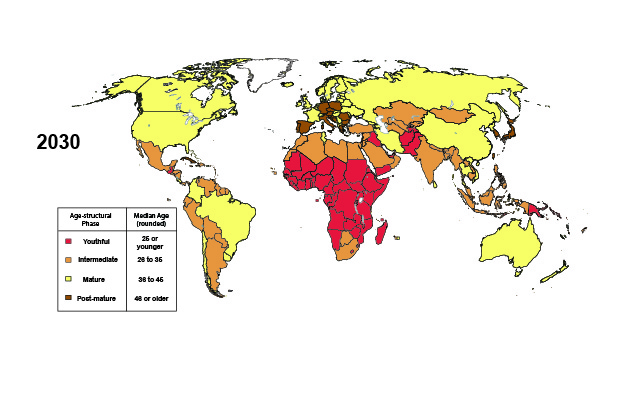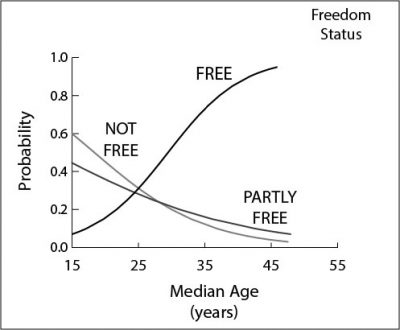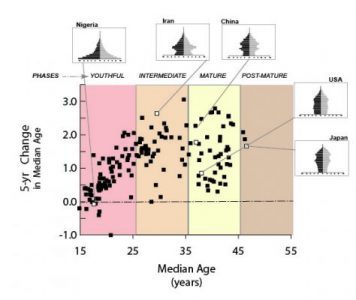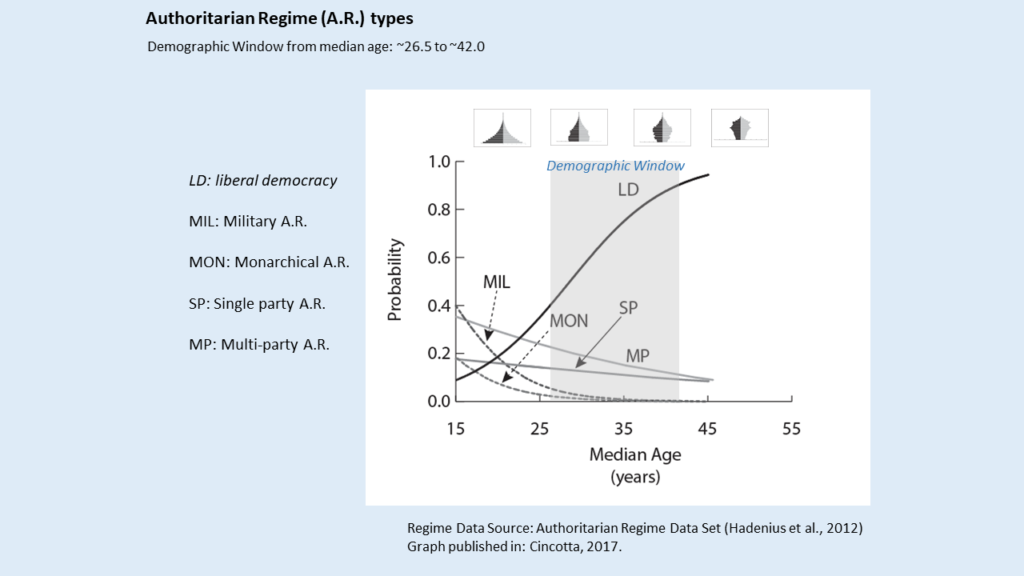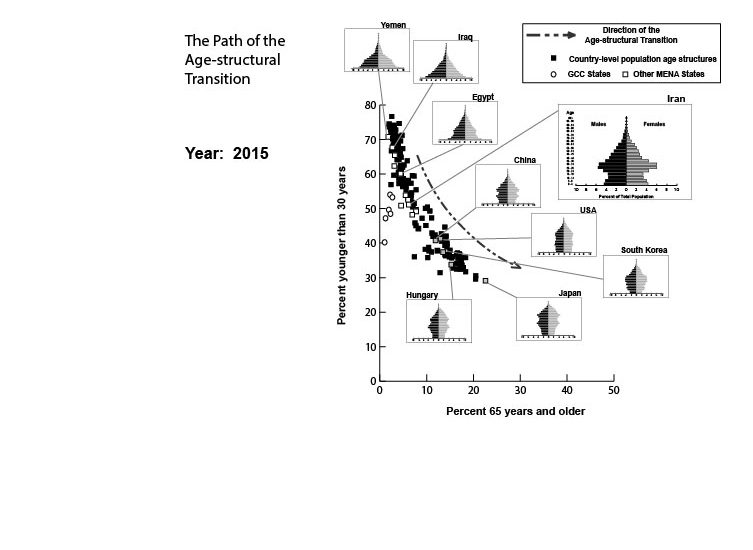
Welcome to politicaldemography.org
Demography Podcast: Everybody Counts
Everybody Counts (by Jennifer Sciubba) is a podcast about all the ways human population shapes our world. From mass urbanization to massive refugee flows, high fertility to record low birth rates, population trends have social, political, and economic consequences. The world’s population is changing in unprecedented ways, and this podcast helps listeners make sense of those changes. Listen (& subscribe) to Jennifer Sciubba’s (professor, Rhodes College) podcast at this site: Everybody Counts.
Attachments
Age-structure and Intra-state Conflict: More or Less Than We Imagined?
Are younger countries at higher risk of civil conflict? The International Crisis Group’s 2018 list of 10 conflicts to watch suggests they might be: Like last year, intra-state conflicts (civil and ethnic conflicts within states, rather than wars between states) dominate the list, and among those, about 70 percent are within youthful countries, or states with a median age of 25.5 years or
younger. The only multi-state cluster mentioned in both 2017 and 2018 lists is the Sahel, the world’s most youthful region.
However, recent studies indicate that population youthfulness can be a less reliable and more unruly predictor than its proponents (including me) initially perceived. Three key factors complicate the relationship between age structure and intra-state conflict: conflict type (civil or territorial); conflict history; and conflict spillover (the cross-border spread of insurgencies among contiguous clusters of youthful countries).
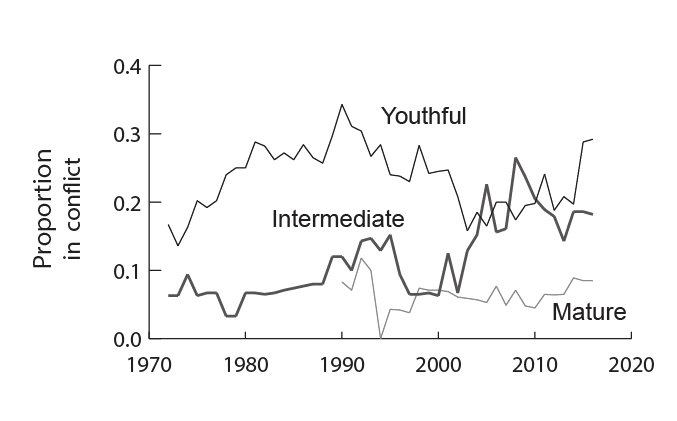
Figure. The proportions of three age-structural groups (youthful, intermediate, mature) in intra-state conflict, 1972 to 2016.
To read the entire article, go to the New Security Beat version, or download from this site.
Attachments
Uncomfortable Companions: Fertility decline and Ideology in Iran
Essay entitled “Uncomfortable Companions” published in the Woodrow Wilson Center’s New Security Beat, March 5, 2018. Also see “Iran in Transition,” Carnegie Endow. Int’l Peace.

It should be an excellent time to be a young Iranian: High school and college enrollments in the Islamic Republic rank near the top of Muslim-majority countries. Women have only about two children on average, compared to 6.5 in the mid-1980s. And childhood mortality is projected to approach North American levels in the next 15 years. Yet, as the recent protests show, many young Iranians feel left out. Job growth—especially for young adults—has failed to keep pace with development, while persistently high rates of inflation steadily drive up the cost of living and cut deeply into Iranians’ savings.
Clearly, young Iranians expect more from their country’s economy. They aren’t alone. In Iran in Transition, a recent report published by the Carnegie Endowment for International Peace, Karim Sadjadpour and I show that Iran is traversing its demographic window of opportunity—an economically advantageous period marked by small proportions of dependent children and seniors, and a large proportion in the most productive working ages. In fact, Iran’s current worker bulge (Fig. 1, below) rivals those that helped make “economic tigers” out of Japan, South Korea, Singapore, Taiwan, Thailand, and China.

[To read the entire essay, go to version on the Wilson Center’s New Security Beat]
or download Uncomfortable Companions_ Fertility Decline and Ideology in Iran here.
Attachments
The 4 Dividends: PRB’s Pace Project
 See the Population Reference Bureau’s excellent video explaining the “Four Dividends” that countries generally attain following fertility decline as they pass through the demographic window. These four dividends are: (1) child survival, (2) educational attainment, (3) per-capita income, and (4) political stability (measured by 10-year risk of intra-state conflict).
See the Population Reference Bureau’s excellent video explaining the “Four Dividends” that countries generally attain following fertility decline as they pass through the demographic window. These four dividends are: (1) child survival, (2) educational attainment, (3) per-capita income, and (4) political stability (measured by 10-year risk of intra-state conflict).
Here are links to obtain the IUSSP Conference paper (authored by Elizabeth Madsen and me) that describes the timing of these changes, in terms of the movement of countries through the age-structural transition. A background paper on the Age-structural Theory of State Behavior is published in the Oxford Research Encyclopedia of Politics. Some of this information is published in a short essay on the “Eight Rules of Political Demography“, on the New Security Beat.
Attachments
Article by Leonid Bershidsky in Bloomberg View
“Democracy in Iran? The demographics say YES” — but the Regime Type says NO
Bloomberg View (plus Bloomberg Business Week) has published Leonid Bershidsky’s excellent article on age-structural theory. Clearly, Bershidsky has read through and grasped much of the research (thank you, Leonid!). Bershidsky uses the theory to discuss recent anti-regime demonstrations in Iran and their outcome, and he neatly summarizes the theory’s predictions and points out its strengths. Notably, he also explores some of the theory’s weaknesses dealing with various types of authoritarian regimes that persist despite the societal changes that are associated with a more mature population and passage through the demographic window.
The article can be viewed at the Bloomberg View website, here.
Bershidsky is right — that aspect of the theory remains weak. To strengthen it, I’ve been using the Authoritarian Regime Data Set (Hadenius, A., J. Teorell, and M. Wahman. 2012. “Authoritarian Regimes Data Set, version 5.0: Codebook.” Lund, Sweden: Department of Political Science, Lund University). Putting Hadenius et al.’s regime types into “age-structural time” produces the following hypothetical relationships with population age structure (click on image to enlarge it).

